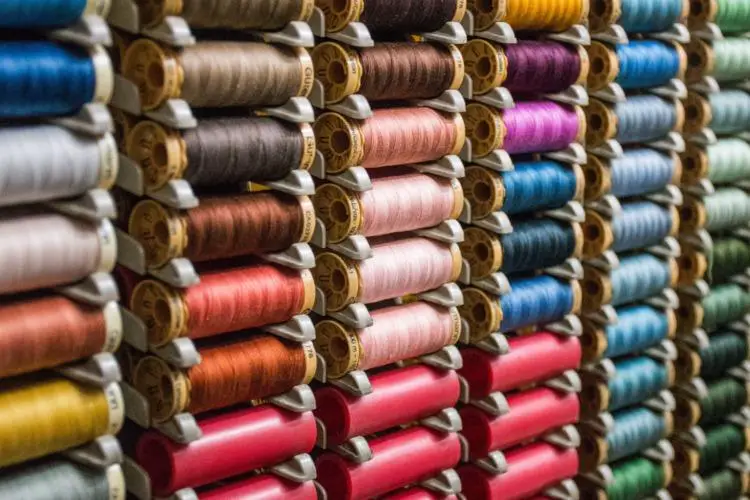The fall in consumer demand and closure of retail stores in high income countries due to the COVID-19 pandemic negatively impacted the textile and garment manufacturers in Ethiopia.
This is according to a new report by Deloitte that found that the manufacturing sector’s growth declined from 7.7 percent in 2019 to 7.5percent in 2020 mainly attributed to subdued demand in the key textile and garment sub-sector as a result of the closure of retail stores in high income countries.
A telephone survey by Deloitte found that 4,000 female garment workers revealed that four out of ten garment workers on Ethiopia’s flagship industrial park lost their jobs due to the COVID-19 pandemic in 2020.
The report also found that decline in capacity utilisation pushed firms in the industrial parks to re-invent their business models pivoting to manufacture of personal protective equipment (PPE).
However, a USD 6.5 million fund was set up between the UK and Germany governments in collaboration with the Ethiopian government with the aim of safeguarding the industry as well as protecting the livelihoods of the workers and thus save thousands of jobs.
Local garment can meet great demand – Tanzania
The National Bank of Ethiopia (NBE) is in charge of assessing applications and textile factories in industrial parks can apply for wage subsidies and incentives to reward businesses that can adapt in response to COVID-19.
According to the report, Ehiopia’s textile and garment industry is a leading provider of jobs in the country’s manufacturing sector with the industrial parks having employed about 95,000 people before the pandemic.
However, the Ethiopian Textile Industry Development Institute (ETIDI) disclosed that Ethiopia earned over USD 171.1 million in the fiscal year ending Jul-2020, showing a robust performance despite the supply chain disruptions witnessed early on.
Order cancellations and suspensions were offset by new foreign customers coming into the pipeline.
In July last year, the country secured USD 15 million of the budgeted USD 16 million from the textile and garment sub-sector in the 2019/2020 fiscal year.
Prior to the pandemic in 2019, the manufacturing sector contributed 4% to Ethiopia’s GDP and employed 13 percent of the total workforce.
“The sector’s growth was 7.5 percent in 2020, lower than the 7.7 percent growth in 2019, due to supply chain disruptions arising from the COVID-19 pandemic.”
Deloitte reveals that the uncertainties surrounding economic recovery from the COVID-19 pandemic, the second/third wave in key export markets, and rising cases within the country affecting the domestic labour supply are expected to limit the growth in the manufacturing sector (particularly garments and textile sub-sectors) to register a growth of 1.5 percent in 2021.
Textile and Garment Players Urge Government to Adopt Clothing Strategy
“Ethiopia’s plans to position itself as a manufacturing hub will benefit companies’ plans to diversify supply chains and reduce reliance on Chinese supply,” the report says.
Overall, Ethiopia’s GDP grew by 6.1 percent in 2020, mainly supported by growth in the industry sector related to construction and infrastructure.
The GDP growth is expected to slow down to 4 percent in 2021 due to constrained private consumption, high inflation levels and subdued economic activity from the prolonged impact of COVID-19.
The report also reveals that about 1.7 million jobs were created during the first half of 2020/2021 fiscal year, an achievement despite the challenges of COVID-19 whereby the Ethiopia’s Job Creation Commission had estimated that between 700,000-2 million jobs were likely to be lost.
The country’s consumer price inflation rose to 20.9 percent in 2020, up from 13.5 percent registered in 2019.
According to the report, this was largely attributable to an increase in the prices of food and non-alcoholic beverages.
Inflation is forecasted to decrease to 10.1 percent in 2021, owing to moderating food prices and reduction in ethnic conflict induced supply chain disruptions.
During the period, the Ethiopian Birr depreciated to ETB 43.7/USD as at 30 June 2021 from ETB 34.3/USD as at 8 May 2020, averaging ETB 33.5/USD in 2020.
This was as a result of growing risk-aversion among investors which led to capital flight out of emerging markets.
“The ETB is expected to depreciate further to ETB 43.7/USD in 2021,” the report says.
The current account deficit narrowed to 4.8 percent of GDP in 2020 compared to 5.8 percent of GDP in 2019.
The current account deficit is expected to average 5.3 percent of GDP in 2021.
